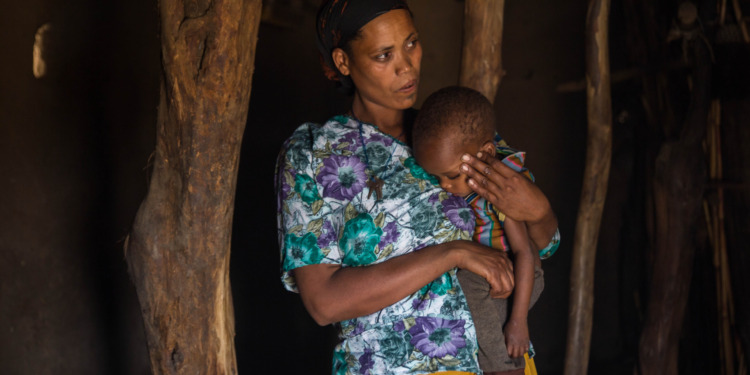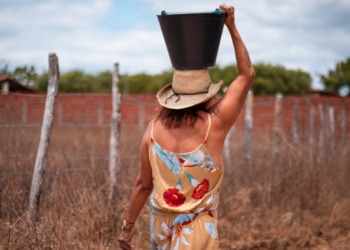The report, published by UNICEF on March 4 — titled “Undernourished and Overlooked” — sought to examine the “current trends of global inequity,” unveiling the barriers that stand between women and girls receiving nutritional standards which support their development.
In its analysis of almost 200 countries, the report finds that no region will be able to reach the target put forward by the UN Sustainable Development Goals (SDGs), to help reduce anaemia and low birthweight by the end of the decade.
The number of pregnant and breastfeeding women facing acute malnourishment has seen a 25% spike, compromising the health of infants who are likely to experience “wasting and stunting during the crucial early years of life.”
Poverty
Conflict
Climate change@UNICEF’s recent report "Undernourished and overlooked" reveal their devastating impact on
malnutrition amongst adolescent girls and women – it surged by 25% in 12 countries impacted by crises.
Full report here https://t.co/bLpcFCt10a pic.twitter.com/j2pfi5tbC5
— UNICEF Office for Relations with EU Institutions (@UNICEF_EU) March 8, 2023
The World Health Organisation describes these effects as “largely irreversible,” leading to consequences to a child’s cognitive abilities and educational capacity.
Regionally, South Asia and Sub-Saharan Africa are at the apex of this crisis where more than 70% of infants face low birthweight. Undernutrition in adolescent girls and women remains rife in low-income countries where they face risks to their health and survival when giving birth.
The report addresses various disparities, from nutritional deficiencies to the vulnerability caused to women’s health by the pandemic.
Every 2 minutes, a woman dies during pregnancy or childbirth.
With the right care, at the right time, most of these deaths could be prevented.https://t.co/axRDJRvJ9w pic.twitter.com/VAPKDIeSl5
— António Guterres (@antonioguterres) February 23, 2023
Health shortages exacerbated by climate events
Circumstances that threaten the livelihood of a population, such as climate change and conflict, disproportionately impact women and girls and create challenges in accessing adequate nutritional and dietary care.
The unprecedented flooding that displaced millions in Pakistan last year destroyed any potential healthcare infrastructure to support the estimated 650,000 pregnant women in the country. These women already faced previous health difficulties before the flooding, in a country experiencing economic crisis and where a large proportion of its population lives below the poverty line.
The Horn of Africa is faced with “the longest and most severe drought on record,” and as a result, residents struggle with food insecurity and women are at increased risk of miscarriage, low birthweight and stunting, as highlighted in the report.
These disasters take place against a backdrop of gender inequality, where access to health and opportunities for education are constrained by the traditional patriarchal norms prevalent in these societies.
Policy change inclusive of women’s needs
Without sufficient data provided by governments to understand “how to improve diets, nutrition services and nutrition and care practices” that can spur policy decisions to accelerate change, the cause for women’s health remains a dire one.
At the moment, crisis response fundamentally lacks action to target women’s social and economic needs. During the pandemic, a meagre 12% of social protection measures were aimed at improving women’s economic security.
The consequences of excluding women from policymaking are severe and allow food insecurity and poverty to persist.
In Eastern and Southern Africa, up to four in five pregnant and breastfeeding women reported food insecurity at the start of the pandemic, facing a unique set of challenges to their male counterparts and reduced access to resources. Food insecurity is set to deteriorate further for adolescent women and girls if they are left without intervention.
In the aforementioned countries, women often find their autonomy denied in all aspects of their everyday life — facing barriers to receiving education, land, financing and social networks.
Related articles: For Women’s Health, Climate Change and Inequality Are a Dangerous Combination | Reproductive Health: Learning From the Animal Queendom | Investing in Women’s Reproductive Health is an Investment for All
The report also identified a worrying trend in the intergenerational nature of malnutrition, affecting a child in both pregnancy and development. It found that “about half of children under two with stunting became stunted during pregnancy and the first six months of life.”
What’s clear from the report’s findings is that women’s and girls’ health remain institutionally unacknowledged to a degree that fails to push government and research bodies to pursue meaningful policy change and support.
Undernutrition and anaemia have “barely fallen since 2000” for women and adolescent girls. Pregnant women in high-income countries benefit from micronutrient supplements to prevent maternal anaemia, but the figure stands at 43% for pregnant women in low-income countries.
The report calls for better nutritional and social support services and the transformation of damaging societal norms to strive towards the aim of “bringing about much faster progress for adolescent girls’ and women’s nutrition.” It lists ten key actions described as “critical to drive change,” including effective leadership to promote women’s needs, government incentives to increase women’s access to nutritious foods and dismantling harmful gender norms that deny women healthcare support.
Therefore, in its analysis of the intersections between the protection of women’s health and reaching measurable action, the report concludes that the nutritional conditions of women and girls are deeply concerning.
When it comes to women’s health, the UN’s proposed solutions are crucial in strengthening social and economic infrastructure. After all, they not only provide women with the best route out of poverty but also one that is in the best interests of everyone in society.
The full report can be found here.
Editor’s Note: The opinions expressed here by the authors are their own, not those of Impakter.com — In the Featured Photo: In drought-affected Mareko Woreda (district) in SNNP Region, Ethiopia, Safiya carries her two-year-old son Habib. Habib was diagnosed with moderate acute malnutrition two weeks earlier and linked to the WFP-supported Targeted Supplementary Food (TSF) programme which provides supplementary food rations for moderately malnourished children and pregnant and lactating women to support their nutritional recovery. He is still on TSF, is recovering well from the acute malnutrition and continues with follow-up treatment.
UNICEF is working together with partners including WFP in the drought response, and provides health and nutrition support including ready-to-use therapeutic food (RUTF), therapeutic milks, routine medications and support for community-based management of acute malnutrition (CMAM). February 25, 2016. Featured Photo Credit: © UNICEF Ethiopia/2016/Ayene.










